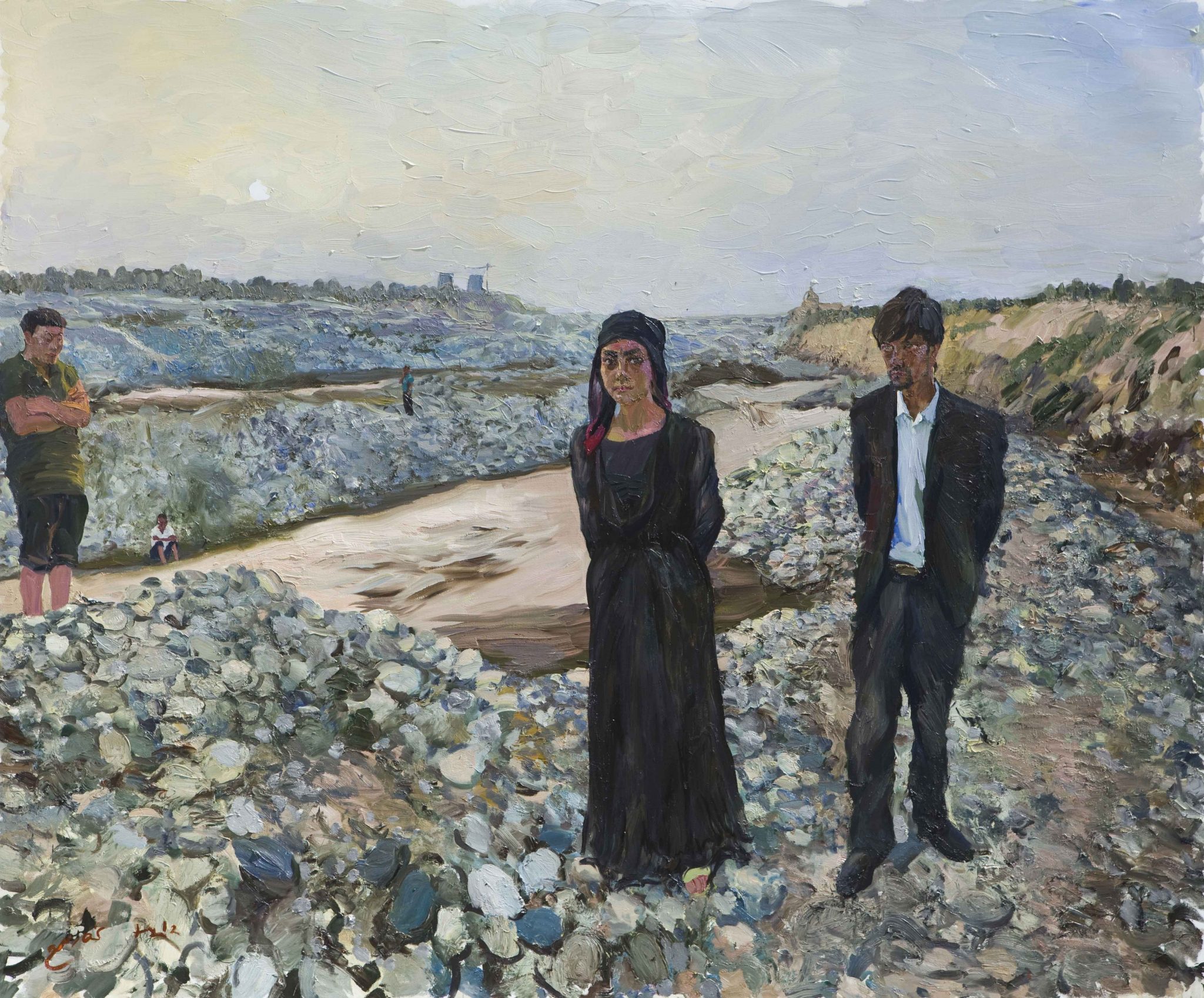Just what is it that makes Liu Xiaodong’s painting so different, so appealing? The fifty-year-old artist’s work has been exhibited from Beijing (Hometown Boy at UCCA in 2011) to Graz (where The Process of Painting has just closed at Universalmuseum Joanneum); Parkett this month launched its 91st volume at Leo Koenig, New York, featuring editions by Liu Xiaodong, among others. Now a concise show of large paintings and supporting work occupies Today Art Museum – the results of his Hotan Project in the jade mining region of Xinjiang Province.
The exhibition consists, in the first room, of four large paintings and a documentary film about the project (Liu is a ‘process’ painter, documenting the making of his art). The paintings depict miners – three show a group of men at work or posing in a blanched landscape of loose rocks and dust amid which they spend each day digging for jade; the fourth shows a young couple together in similar surroundings. The canvases are each 250 × 300 cm – big, but not so that the figures are quite lifesize. The mode of application is painterly, with large, lively, visible brushmarks to describe the forms of stones, clothing and the approximate expressions of the figures. The impression is direct and lifelike, conveying less a preoccupation with detail than with the overall character of the scene and demeanour of its cast of local labourers. As is Liu’s habit, the works were painted outside and onsite. In another room, a large number of sketches and photographs painted over in places with acrylic evoke the artist’s period of work in Hotan – though these are not especially absorbing.
A recent interview with Liu threw out the comment that ‘truth in painting does not equal truth in reality’; the artist’s approach is purposefully anthropological – in recent years, travelling to remote or socioeconomically strained regions for periods of months at a time to observe and paint them. The resulting canvases are ‘impressions’ of certain realities, and also (the artist admits) proof that he was actually there. His practice thus encircles an idea of ‘truth’, the nature of which has generated far more discussion than have the actual places or people he visits. Faced with these realistic images, one might ask (as did Christopher Moore in a recent article) where their truth really lies, or adapt a common adage: ‘I saw it in a painting, so it must be true’. It can be easy to accept these works simply as true to life. In fact, they are true not so much to their places of origin as to the artist’s hand and eye. Liu’s paintings finally evoke less journeying to a new location and the delivery of its image to outside viewers than the import of ‘local’ people and scenes into the locale of his own artistic realm. Thus interpreted, these paintings are primarily revelations not of places, or people, but of painting and its ability to address different subjects alike in a firm, consistent language. As such, Liu Xiaodong’s work is without doubt convincing.
This article was first published in the April 2013 issue.
